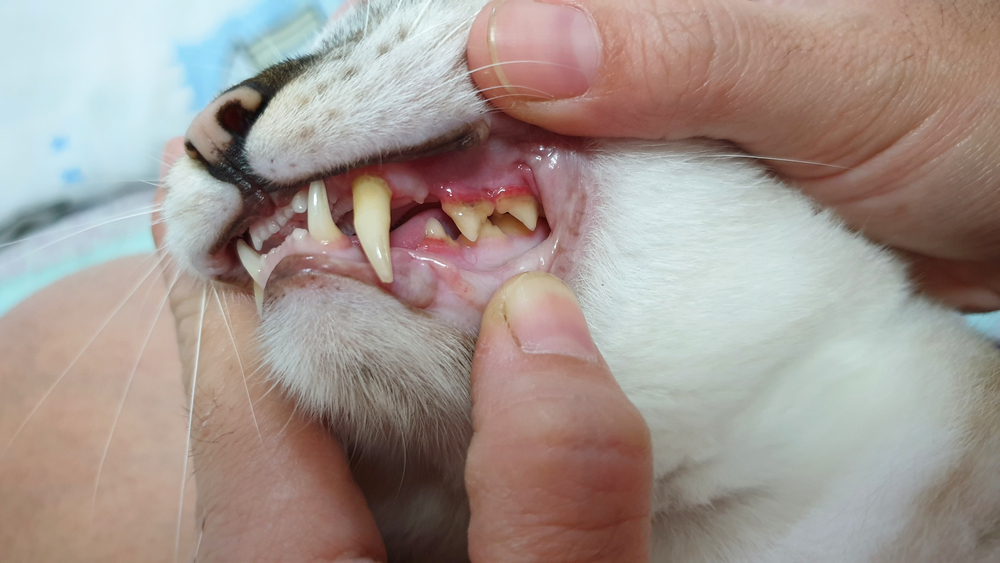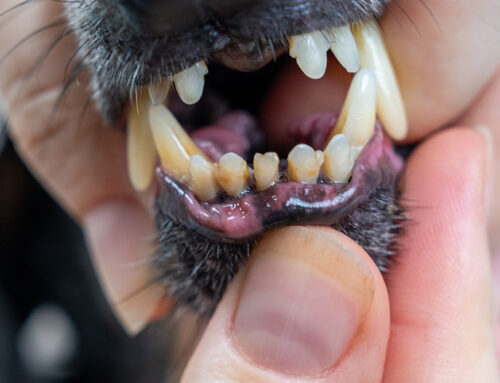Results vary, but the consensus is clear—periodontal disease is one of the most commonly diagnosed conditions in pets. Studies show that up to 90% of all cats and dogs have some level of periodontal disease by ages 2 to 3. Such an overwhelming majority of the pet population suffers from gum disease that it could actually be the most common condition, and one of the top problems, affecting pets.
Since your pet is likely already or will be affected by periodontal disease, learning how to identify the problem and understanding its treatment and prevention is important. To help ensure your furry pal enjoys optimal oral health, our North Bay Veterinary Dentistry team answers common questions about periodontal disease in pets.
Question: What is periodontal disease in pets?
Answer: Periodontal disease in pets is a common dental condition that affects the gums, teeth, and overall oral health. The bacteria involved in the formation of plaque trigger the immune system to react. This inflammation eventually leads to the destruction of the supportive structures of the tooth, including the gingiva, periodontal bone, and ligaments.
Q: How can I tell if my pet has periodontal disease?
A: Periodontal disease can be difficult to spot in pets, as cats and dogs are experts at compensating for discomfort and illness. You likely won’t notice many signs until the condition has advanced, unless you perform thorough oral exams at home. Watch out for periodontal disease signs, such as:
- Bad breath
- Swollen, inflamed, or bleeding gums (i.e., gingivitis)
- Yellow, brown, or grey plaque and tartar accumulation
- Receding gums
- Bloody saliva or increased drooling
- Blood on chew toys or in the water bowl
- Loose or missing teeth
- Difficulty chewing hard food or treats
- Chewing on one side of the mouth
- Dropping food while eating
- Pawing at the mouth
- Bumps on the muzzle below the eyes
- Sneezing or nasal discharge
- Head shy or irritable behavior when petted around the head
If you notice any of these signs, contact your primary care veterinarian or our NBVD team.
Q: Can periodontal disease affect my pet’s overall health?
A: Untreated periodontal disease can lead to systemic health issues that affect vital organs. While mineralized plaque becomes difficult-to-remove calculus (i.e., tartar), plaque bacteria are the real problem, because they infiltrate your pet’s entire body, potentially causing tooth loss, jaw fractures, and systemic disease, and attacking the heart, kidneys, and liver. Periodontal disease can also make chronic conditions (e.g., diabetes) more difficult to control. Therefore, regular dental care is not only about maintaining a healthy smile but also your pet’s overall well-being.
Q: Are certain pets more prone to periodontal disease?
A: Any pet can develop periodontal disease, but some breeds are genetically predisposed. Small-breed dogs and cats tend to be more susceptible and require extra attention to their dental health. Brachycephalic pets (i.e., those with short snouts and flattened faces) are also more likely to develop periodontal disease, because their crowded teeth, facial conformation, and the way their jaws fit together contribute to increased plaque accumulation and speed up periodontal disease progression.
Q: Can periodontal disease be prevented in pets?
A: The answer to this is tricky, but most often yes!, Regular at-home dental care (brushing, chews, food and water additives, etc.) and professional anesthetized dental cleanings can significantly reduce disease risk or at the least allow for earlier detection and treatment.
Q: What can I do at home to support my pet’s dental health?
A: Besides regular toothbrushing, you can feed your pet dental-friendly treats and chews, add preventive additives to their food and water, and schedule routine veterinary exams. When you purchase pet dental care products, check for the Veterinary Oral Health Council seal of approval, which certifies that the items have been proven to effectively reduce plaque and tartar accumulation. Your primary care veterinarian may also recommend dental diets or additional oral care products according to your pet’s needs.
Q: When should I seek veterinary help for my pet’s dental issues?

A: If you notice any periodontal disease signs, such as bad breath, gum recession, red or bleeding gums, or changes in eating habits, consult your primary care veterinarian or our NBVD team promptly. Early intervention is crucial to prevent dental disease progression.
Remember, your pet’s dental health is a vital aspect of their overall well-being. By staying proactive and attentive to their oral care, you can help prevent and manage periodontal disease, and help ensure your furry friend has a happy and healthy life. If in doubt, always consult with your primary care veterinarian for personalized advice and care, or set up an appointment with our North Bay Veterinary Dentistry team.






Leave A Comment